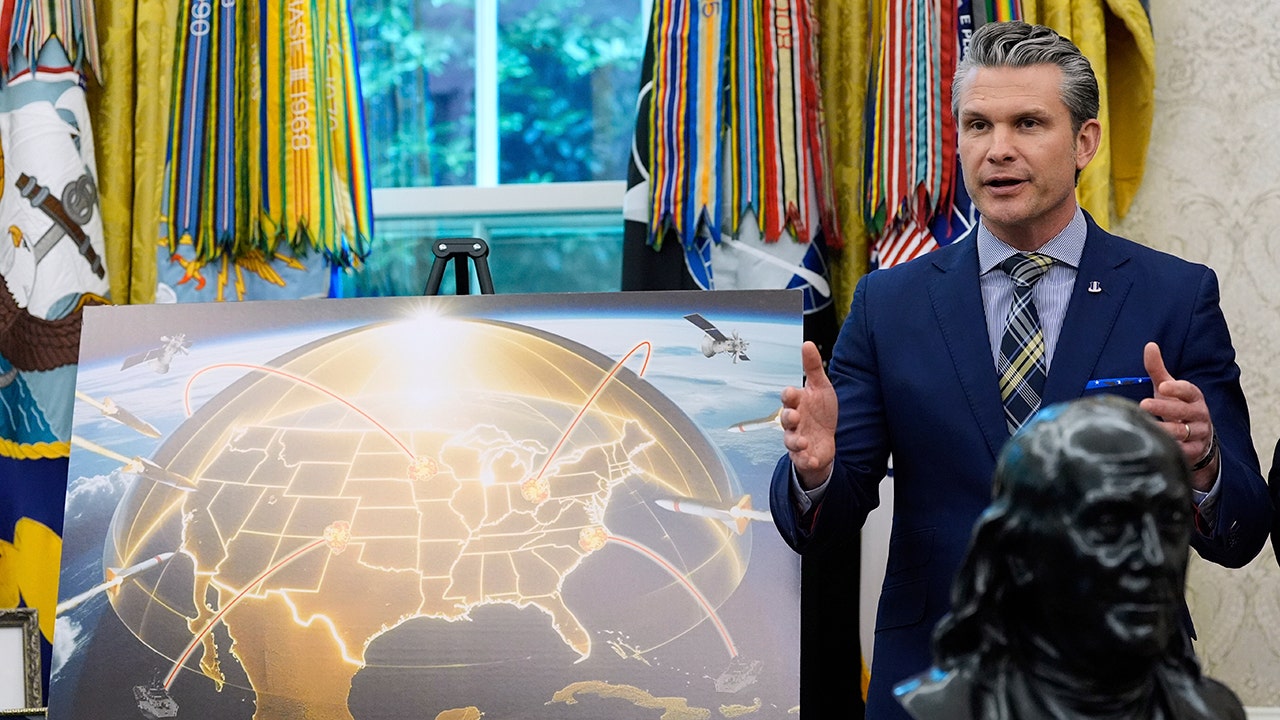New York
What a Commissioner’s Abrupt Exit Says About the N.Y.P.D. Under Adams

If Commissioner Keechant Sewell, head of the nation’s largest police force, wanted to promote an investigator to first-grade detective, she had to clear it with City Hall, according to her former top uniformed officer.
When she was selecting someone to run the New York Police Department’s Intelligence Division, her choice was blocked by members of Mayor Eric Adams’s administration, according to several current and former officials.
And when First Deputy Commissioner Edward Caban and Chief of Department Jeffrey Maddrey took the department’s second- and third-highest jobs, they had been handpicked not by Ms. Sewell but by Mr. Adams, those officials said.
After less than 18 months on the job, Ms. Sewell had apparently had enough. She will leave 1 Police Plaza for good at the end of the month.
Ms. Sewell, 51, is walking away from a department of 36,000 uniformed officers that saw the rate of major crimes like murders and shootings fall during her tenure. Morale, at critical levels following the pandemic and racial-justice protests in 2020, was slowly improving, partly because of a contract she helped negotiate that included raises and more flexible schedules. She added about 30 detectives to a sex-crimes unit that for years had been understaffed and overworked.
Now, officers, department watchdogs and community leaders are trying to figure out what comes next.
Mr. Caban, who has been with the department since 1991, is the leading candidate to become interim commissioner, according to several officials with knowledge of the decision.
Whoever heads the department will face a slew of challenges: officers who union leaders say are being lured away by better hours and pay; residents of color who do not trust the top leaders; and the challenge of keeping the city safe enough to foster a post-pandemic revival.
Perhaps the most daunting task will be serving a mayor — himself a former police captain — whose administration is believed to have meddled so much that Ms. Sewell felt she had to quit. While previous commissioners said they had to deal with some level of micromanagement, they said they were typically allowed to pick their own teams and rarely had to get approval for discretionary promotions.
Patrick Hendry, the incoming president of the Police Benevolent Association union, said officers saw Ms. Sewell as “someone who truly cared.”
“We didn’t think she was going anywhere,” he said, adding, “No matter who the police commissioner is going forward, whether it is Commissioner Caban or someone else, we have real issues that we have to address right away.”
Signs of a new chapter emerged soon after Ms. Sewell’s announcement on Monday.
On Tuesday, Mr. Adams canceled his appearance at a Pride event at headquarters, where he and Ms. Sewell had both been scheduled to speak. Ms. Sewell did not take the stage. Instead, she remained seated in the back as a line of high-ranking command staff sat in the front row, including Mr. Caban. On Thursday, Mr. Caban joined Mr. Adams at an appearance related to World Elder Abuse Awareness Day that Ms. Sewell had been scheduled to attend.
A spokesman for Mr. Adams declined to comment, referring to a news conference where Mr. Adams defended his management and said he was the only mayor in decades “who actually worked in a city agency.”
“Every other mayor had to turn over those agencies and allow people to run them the way they desire,” Mr. Adams said. “That’s not how I function.”
Ms. Sewell did not respond to a message seeking comment. On Thursday, the department’s Twitter account posted a video of her at Gracie Mansion for a Juneteenth celebration, where she thanked Mr. Adams for making her the commissioner and called it “the honor of my lifetime.”
But in December, Ms. Sewell gave a fiery speech at a scholarship ceremony hosted by the Policewomen’s Endowment Association that was cast as a rhetorical letter to whomever might become the department’s second female commissioner. Ms. Sewell warned that person that she would be “second-guessed, told what you should say, told what you should write by some with half your experience.”
“You will get free unsolicited personal advice: ‘Your hairstyle is wrong, you look tired, already worn out in less than a year, you should wear different clothes, you’re not qualified, you are in over your head,” she said to applause and cheers. “None of this is true.”
William J. Bratton, the department’s former commissioner, called Ms. Sewell’s departure a “lesson for the mayor.”
Mr. Adams should reflect on “what the hell went wrong,” he said, adding, “How do you lose somebody as talented and respected and capable as her?”
Advocates for survivors of sexual assault said they hoped that the next commissioner would continue the momentum they saw building under Ms. Sewell. She had put in a new chief to run the Special Victims Division, told him to prioritize the concerns of advocates, provided more training for officers on how to interact with victims and installed a legal adviser to help investigators understand laws and procedure, they said.
“It was great that Mayor Adams appointed the first woman commissioner, but it was so much more important that he chose a commissioner who took crimes against women seriously,” said Jane Manning, the director of the Women’s Equal Justice Project.
Ms. Sewell also earned a reputation for loyalty to her subordinates that angered some watchdogs.
The Civilian Complaint Review Board, a watchdog agency that examines police misconduct, said that in 2022 she rejected more than half of its disciplinary recommendations. Ms. Sewell defended her record, saying that in many of those cases, the board had not given the department enough time to review complaints. When it did, she said, she agreed with the board’s recommendations more than 80 percent of the time.
Arva Rice, the chairwoman of the board, said that the relationship improved after the department agreed to provide the data to investigate complaints of racial profiling. She said she hoped the new commissioner would be pushed to cooperate more.
“The mayor said he’s in support of accountability,” Ms. Rice said. “We want to make sure we’re in line with him on what that means, and what those polices look like in action.”
Donna Lieberman, the executive director of the New York Civil Liberties Union, said her organization was troubled by what she sees as a sharp return under Mr. Adams to more aggressive tactics that disproportionately affect Black and Latino residents. “It’s no stretch to say he’s been serving as police commissioner in many ways,” she said.
She noted that the number of times police stopped and frisked people on the street, while still far lower than a decade ago, increased in the past year.
Police issued more than twice as many summonses in the first quarter of 2023 compared with the same period in 2022 for low-level offenses like open container violations, disorderly conduct and public urination, according to the organization’s analysis.
“Things are not going in the right direction,” Ms. Lieberman said.
Many young officers, who were horrified by images of police brutality they saw in the city and across the country, want a different approach, said Edwin Raymond, who retired as a lieutenant last month and has criticized the department for discriminating against Black and Latino residents.
“There is a disconnect between the powers that be and the rank and file,” he said. Mr. Raymond said he believed Ms. Sewell appeared ready to enact more reforms, but “she didn’t have enough time.”
Kenneth Corey, the former chief of the department, who was briefed on how Ms. Sewell’s promotions were vetted by the Adams administration, said that she had connected more quickly with the rank and file than any other commissioner he had seen.
She moved officers to tears with her eulogies for Jason Rivera and Wilbert Mora, who were fatally shot less than three weeks into her tenure. On Christmas Eve, she visited nearly two dozen precincts and dropped off Italian cookies for officers working the holiday shift. She visited the home of an officer whose teenage daughter had contracted a staph infection and had to have limbs amputated.
Mr. Corey recalled an event for fallen officers, where Ms. Sewell abruptly stopped reading from prepared remarks and looked out at the families in front of her.
“‘Yeah, I don’t want to do this,’” Mr. Corey recalled her saying. “‘What I’m going to do is walk around and talk to you.’”
She spent the next two hours going from table to table, asking about the officers who had died, Mr. Corey said.
At the Pride event on Tuesday, Ms. Sewell waited until the ceremony was over, then strode to the front of the auditorium to meet with officers, who quickly lined up for pictures and hugs. One who took a photo with her ran to a group of friends and beamed as she showed it to them.
The officer said she had wanted to get one last shot with the commissioner before she left.
Hurubie Meko, Emma G. Fitzsimmons and William K. Rashbaum contributed reporting.

New York
Are You Smarter Than a Billionaire?

Over the course of one week, some of the richest people in the world descended on New York’s auction houses to purchase over $1 billion of art. It might have played out a little differently than you would have expected.
Can you guess which of these works sold for more?
Note: Listed sale prices include auction fees.
Image credits: “Untitled,” via Phillips; “Baby Boom,” via Christie’s Images LTD; “Hazy Sun,” With permission of the Renate, Hans & Maria Hofmann Trust/Artists Rights Society (ARS), New York; via Christie’s Images LTD; “Petit Matin,” via Christie’s Images LTD; “Concetto spaziale, La fine di Dio,” Artists Rights Society (ARS), New York/SIAE, Rome; via Sotheby’s; “Baroque Egg with Bow (Orange/Magenta),” via Sotheby’s; “The Last Supper,” The Andy Warhol Foundation for the Visual Arts, Inc./Licensed by Artists Rights Society (ARS), New York; via Christie’s Images LTD; “Campbell’s Soup I,” The Andy Warhol Foundation for the Visual Arts, Inc./Licensed by Artists Rights Society (ARS), New York; via Christie’s Images LTD; “Miss January,” via Christie’s Images LTD; “Fingermalerei – Akt,” via Sotheby’s; “Grande tête mince (Grande tête de Diego),” Succession Alberto Giacometti/Artists Rights Society (ARS), NY; via Sotheby’s; “Tête au long cou,” Succession Alberto Giacometti/ARS, NY/Photos: ADAGP Images/Paris 2025; via Christie’s Images LTD; “Revelacion,” Remedios Varo, Artists Rights Society (ARS), New York / VEGAP, Madrid; via Christie’s Images LTD; “Le jardin nocturne,” Foundation Paul Delvaux, Sint-Idesbald – ARS/SABAM Belgium; via Christie’s Images LTD.
Produced by Daniel Simmons-Ritchie.
New York
Video: How a Mexican Navy Ship Crashed Into the Brooklyn Bridge

On Saturday, a Mexican Navy ship on a good will tour left a New York City pier bound for Iceland. Four minutes later, it crashed into the Brooklyn Bridge. [Spanish] “It’s falling!” [English] “No way!” Here’s what happened. The Cuauhtémoc had been docked on the Lower East Side of Manhattan for four days, open to visitors looking for a cultural experience. As the ship prepared to leave on Saturday night, a tugboat arrived to escort it out of its pier at 8:20 p.m. The ship’s bow, the front of the vessel, faced Manhattan, meaning it would need to back out of its berth into the East River. As the Cuauhtémoc pulled away from shore, the tugboat appeared to push the side of the ship, helping to pivot the bow south toward its intended route. The river was flowing northeast toward the Brooklyn Bridge and the wind was blowing in roughly the same direction, potentially pushing the ship toward a collision. Photos and videos suggest the tugboat was not tied to the ship, limiting its ability to pull the ship away from the bridge. The Cuauhtémoc began to drift north, back first, up the river. Dr. Salvatore Mercogliano, who’s an adjunct professor at the U.S. Merchant Marine Academy, told The Times that the ship appeared to be giving off a wake. This suggests its propellers may have been running in reverse, pushing it faster toward the bridge. The tugboat sped alongside the ship as it headed north, possibly trying to get in front of it and help the ship maneuver the other way. But it was unable to cut the ship off or reverse its course. All three masts crashed into the underside of the Brooklyn Bridge at approximately 8:24 p.m., four minutes after the ship had left the pier, causing the top sails to collapse. Crew members standing on the masts during the collision were thrown off entirely. Others remained hanging from their harnesses. A New York City patrol boat arrived about eight minutes after the collision, followed quickly by a fire department boat. Additional law enforcement and emergency medical services removed the wounded for treatment. According to the Mexican Navy, two of the 227 people aboard the ship were killed and 22 others were injured.
New York
Audio Data Shows Newark Outage Problems Persisted Longer Than Officials Said

On April 28, controllers at a Philadelphia facility managing air traffic for Newark Liberty International Airport and smaller regional airports in New Jersey suddenly lost radar and radio contact with planes in one of the busiest airspaces in the country.
On Monday, two weeks after the episode, Sean Duffy, the secretary of transportation, said that the radio returned “almost immediately,” while the radar took up to 90 seconds before it was operational.
A Times analysis of flight traffic data and air traffic control feed, however, reveals that controllers were struggling with communication issues for several minutes after transmissions first blacked out.
The episode resulted in multiple air traffic controllers requesting trauma leave, triggering severe flight delays at Newark that have continued for more than two weeks.
Several exchanges between pilots and controllers show how the outage played out.
Outage Begins
Air traffic recordings show that controllers at the Philadelphia facility first lost radio and radar communications for about a minute starting just before 1:27 p.m., after a controller called out to United Flight 1951, inbound from Phoenix.
The pilot of United 1951 replied to the controller’s call, but there was no answer for over a minute.
1:26:41 PM
Controller
OK, United 1951.
1:26:45 PM
Pilot
Go ahead.
1:27:18 PM
Pilot
Do you hear us?
1:27:51 PM
Controller
How do you hear me?
1:27:53 PM
Pilot
I got you loud and clear now.
Two other planes reached out during the same period as United 1951 — a Boeing 777 inbound from Austria and headed to Newark, and a plane whose pilot called out to a controller, “Approach, are you there?” Their calls went unanswered as well.
Radio Resumes, With Unreliable Radar
From 1:27 to 1:28 p.m., radio communications between pilots and controllers resumed. But soon after, a controller was heard telling multiple aircraft about an ongoing radar outage that was preventing controllers from seeing aircraft on their radarscopes.
One of the planes affected by the radar issues was United Flight 674, a commercial passenger jet headed from Charleston to Newark.
1:27:32 PM
Pilot
United 674, approach.
1:27:36 PM
Controller
Radar contact lost, we lost our radar.
1:30:34 PM
Controller
Turn left 30 degrees.
1:31:03 PM
Pilot
All right, we’re on a heading of 356. …
1:31:44 PM
Controller
I see the turn. I think our radar might be a couple seconds behind.
Once the radio started operating again, some controllers switched from directing flights along their planned paths to instead providing contingency flight instructions.
At 1:28 p.m., the pilot of Flight N16NF, a high-end private jet, was called by a controller who said, “radar contact lost.” The pilot was then told to contact a different controller on another radio frequency.
About two and a half minutes later, the new controller, whose radar did appear to be functioning, instructed the pilot to steer towards a location that would be clear of other aircraft in case the radio communications dropped again.
Flight N426CB, a small private jet flying from Florida to New Jersey, was told to call a different radio frequency at Essex County Airport, known as Caldwell Airport, in northern New Jersey for navigational aid. That was in case the controllers in Philadelphia lost radio communications again.
1:27:57 PM
Controller
If for whatever reason, you don’t hear anything from me further, you can expect to enter right downwind and call Caldwell Tower.
1:29:19 PM
Controller
You just continue on towards the field. They’re going to help navigate you in.
This is in case we are losing our frequencies.
1:29:32 PM
Pilot
OK, I’m going over to Caldwell. Talk to you. Have a good afternoon.
Minutes Later, Radar Issues Persist
According to the Federal Aviation Administration, aircraft reappeared on radarscopes within 90 seconds of the outage’s start, but analysis of air traffic control recordings suggest that the radar remained unreliable for at least some radio frequencies for several minutes after the outage began around 1:27 p.m.
At 1:32 p.m., six minutes after the radio went quiet, Flight N824TP, a small private plane, contacted the controller to request clearance to enter “Class B” airspace — the type around the busiest airports in the country. The request was denied, and the pilot was asked to contact a different radio frequency.
1:32:43 PM
Pilot
Do I have Bravo clearance?
1:32:48 PM
Controller
You do not have a Bravo clearance. We lost our radar, and it’s not working correctly. …
If you want a Bravo clearance, you can just call the tower when you get closer.
1:32:59 PM
Pilot
I’ll wait for that frequency from you, OK?
1:33:03 PM
Controller
Look up the tower frequencies, and we don’t have a radar, so I don’t know where you are.
The last flight to land at Newark was at 1:44 p.m., but about half an hour after the outage began, a controller was still reporting communication problems.
“You’ll have to do that on your own navigation. Our radar and radios are unreliable at the moment,” a Philadelphia controller said to a small aircraft flying from Long Island around 1:54 p.m.
Since April 28, there has been an additional radar outage on May 9, which the F.A.A. also characterized as lasting about 90 seconds. Secretary Duffy has proposed a plan to modernize equipment in the coming months, but the shortage of trained staff members is likely to persist into next year.
-

 Culture1 week ago
Culture1 week agoBook Review: ‘Original Sin,’ by Jake Tapper and Alex Thompson
-

 News1 week ago
News1 week agoAs Harvard Battles Trump, Its President Will Take a 25% Pay Cut
-

 Education1 week ago
Education1 week agoVideo: Opinion | We Study Fascism, and We’re Leaving the U.S.
-

 Technology1 week ago
Technology1 week agoLove, Death, and Robots keeps a good thing going in volume 4
-

 Education1 week ago
Education1 week agoA $5 Billion Federal School Voucher Proposal Advances in Congress
-

 News1 week ago
News1 week agoMenendez Brothers Resentenced to Life With Parole, Paving Way for Freedom
-

 Politics1 week ago
Politics1 week agoRepublicans say they're 'out of the loop' on Trump's $400M Qatari plane deal
-

 Technology1 week ago
Technology1 week agoMeta’s beef with the press flares at its antitrust trial














